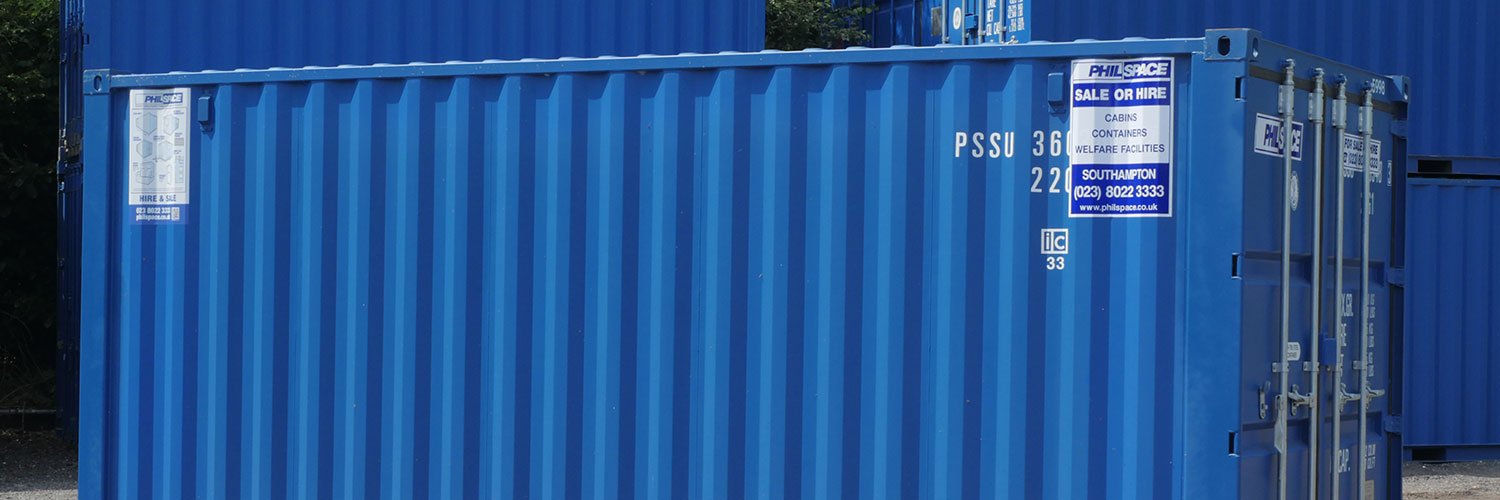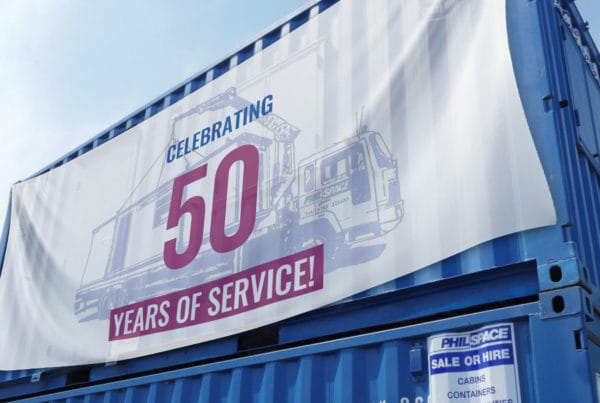Shipping container types
Whilst the word ‘shipping containers’ brings to mind the standard container, there are, in fact, many different kinds of shipping containers. Here is a guide to the most common types and their uses.
Shipping containers were devised by Malcolm Mclean and Keith Tantlinger in 1955. This new invention helped bring down transport costs, allowing international trade to flourish.
The original design was for a simple unit that was 8ft tall, 8ft wide, and 10ft long. Today, there are many different types of shipping containers, some highly specialised. Since they all have their uses, we thought we’d create a guide to the most common types to help you pick the right one for your needs.
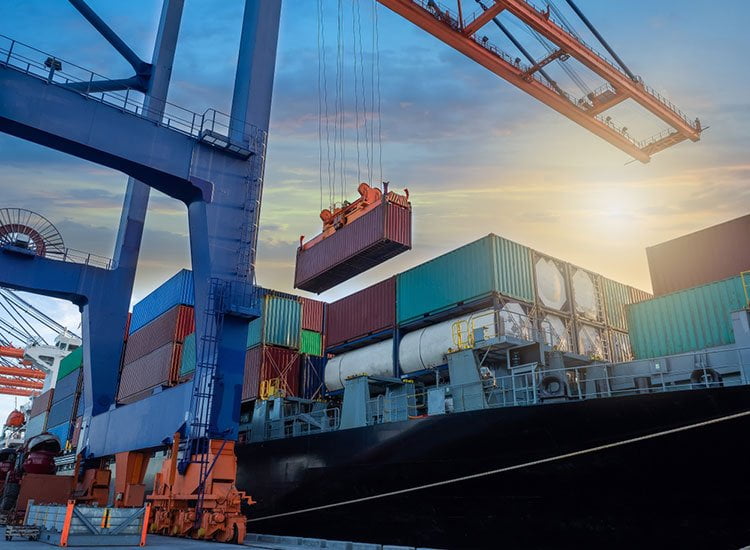
Common Types of Shipping Containers
Standard Shipping Containers
Standard or general-purpose units are the most common type of shipping containers. This is what most people would think of when talking about containers.
Commonly available in 20ft and 40ft, these box-style units have doors on one end. They have a standard rectangular shape.
Whilst they may sound quite ordinary, they are the most common because they are incredibly versatile.
As containers, they can be used to transport most dry goods, whether they are in boxes or pallets, barrels or sacks. They can even be modified to carry hanging items.
However, once they are no longer being used for transporting goods, they can also be used as storage containers or modified into houses, sheds and more.
Flat Rack Containers
Similar in shape and size to the standard shipping containers, flat rack containers have one small difference. They have collapsible sides which you can fold down to create an open-sided container.
Ideal for goods that are larger than the width of standard containers, these are often used to transport out-of-gauge goods.
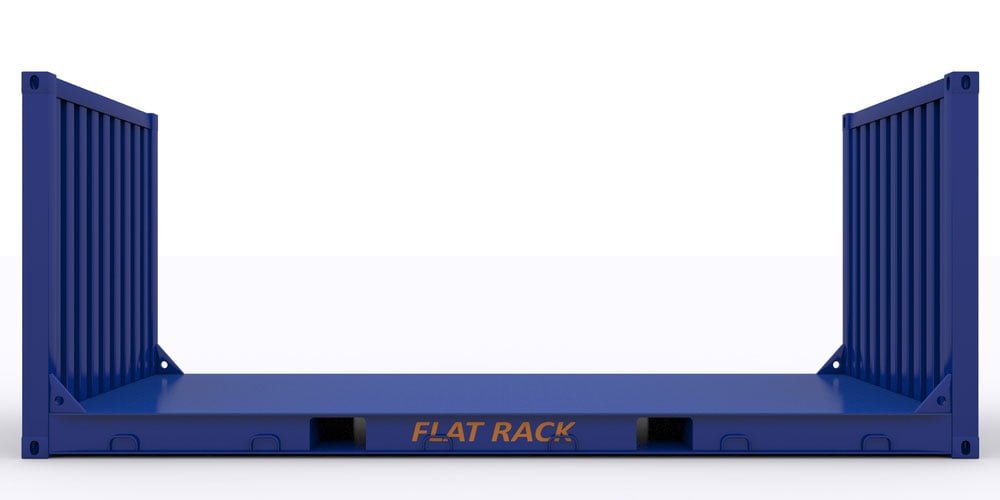 Open Top Containers
Open Top Containers
This type of container has a removable top, making it perfect for goods that are too tall for standard containers. These can also be used to load heavy items that need to be lifted in using a crane and can’t be carried in through the door.
Tunnel Containers
These containers get their name from the fact that they have doors on both ends, not just one. Whilst they are otherwise exactly like standard containers, the two sets of doors make it easier to load and unload them.
High Cube Containers
High cube shipping containers are called that because they are about a foot taller than standard containers. This means they have more volume, so they can accommodate more cargo.
Open Side Containers
Certain type of cargo will fit inside a standard shipping container but is too wide to go in through the door. For such goods, the best type of container to use is the open side container. As the name suggests, this type of container has a door on one of the sides in addition to a door on one end.
ISO Reefer Containers
Standard containers are great for dry cargo, but if your shipment is temperature-sensitive, then you need ISO reefer containers. These ‘refrigerated’ units can maintain a low temperature as long as they have an external power source.
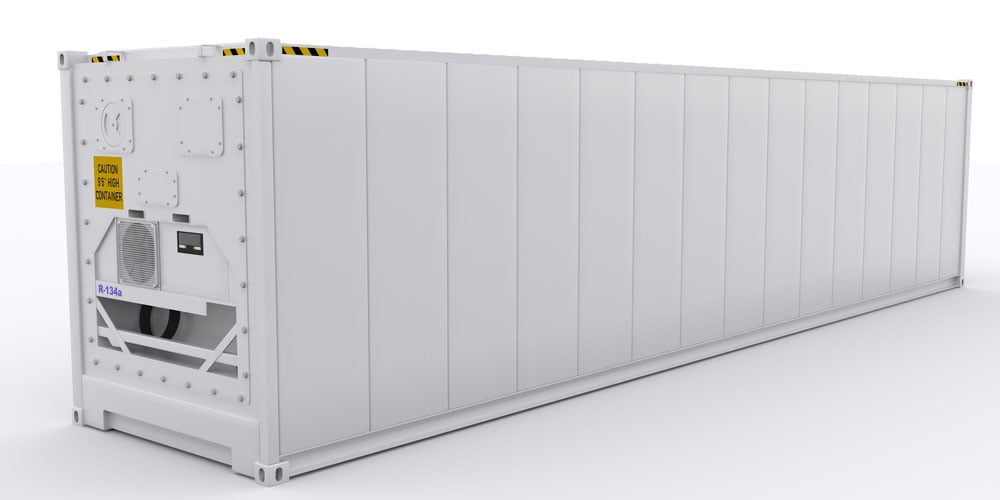 Insulated Containers
Insulated Containers
Whilst ISO reefer containers can keep the temperature inside regulated, insulated containers can keep it steady for a longer duration in higher temperatures. However, unlike reefer containers, they don’t need an external power source as they have a mechanical compressor in addition to the insulation in their body.
Half-Height Containers
Certain types of goods might not be very big but are extremely heavy. In order to manage their weight, you need to pack a smaller quantity. However, in a standard container, this means much of the space inside is wasted. This is why you have the half-height container. These containers aren’t as high, so you can pack heavy goods in them without wasting space.
Tank Containers
All of the containers we’ve discussed so far are for dry goods. But what happens if you need to transport a liquid? For this, you need tank containers. Made out of anti-corrosive material, these containers can be used for chemicals, petroleum or other kinds of fluids.
As you can see, there are many different types of shipping containers available for a variety of goods. If you need to transport cargo across land or sea, you can select the one that suits your needs.
However, if you require used shipping containers for storage space or for construction, get in touch with us. We will be happy to provide you with exactly what you need.

